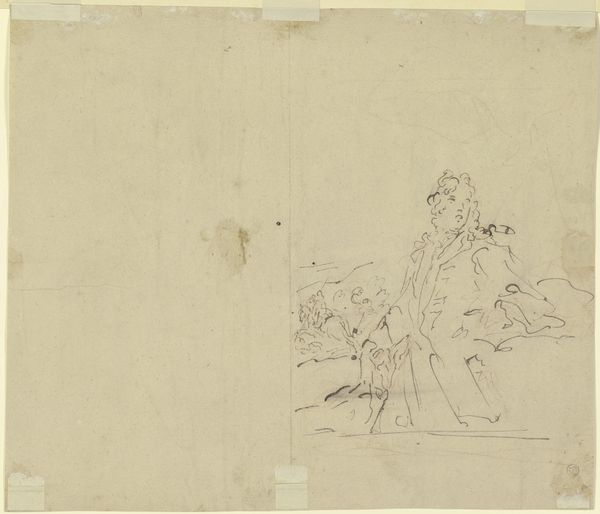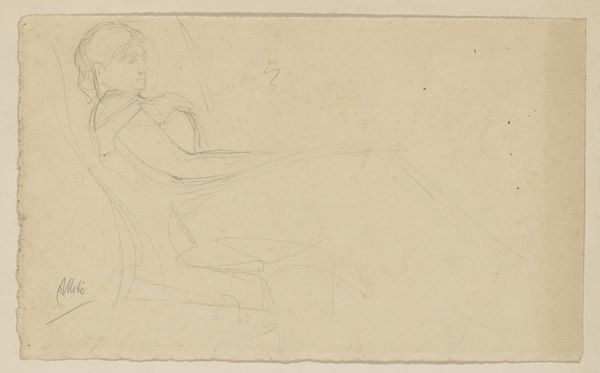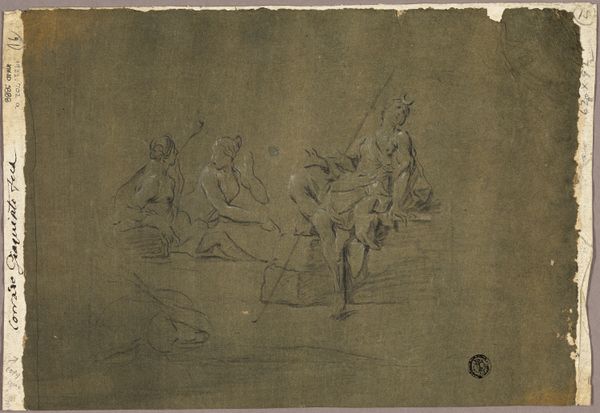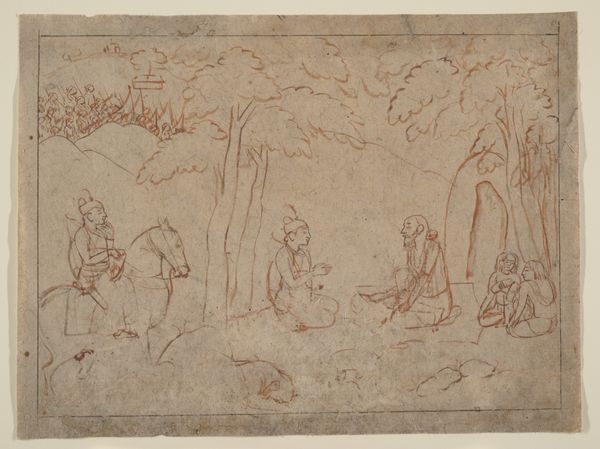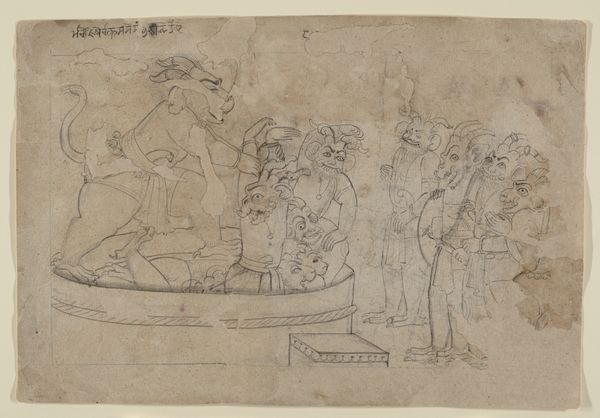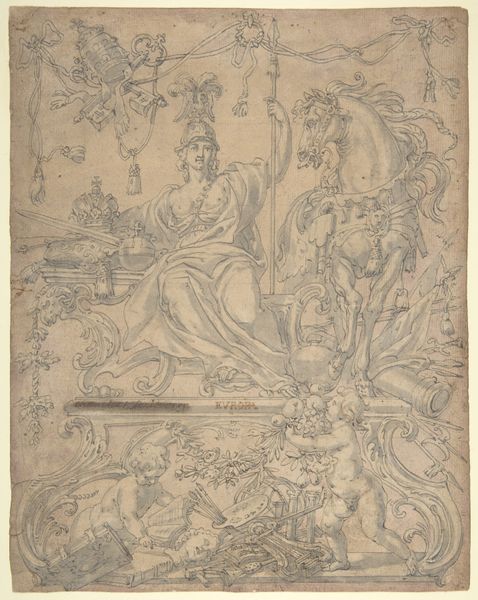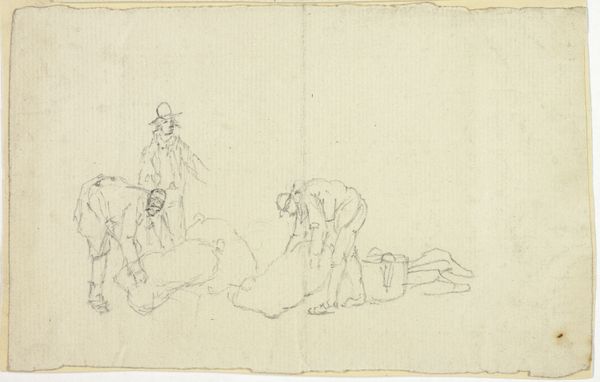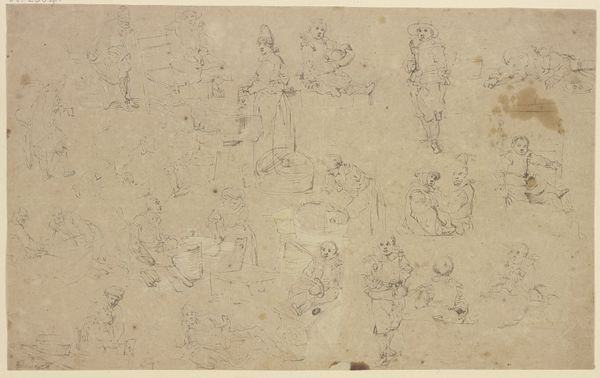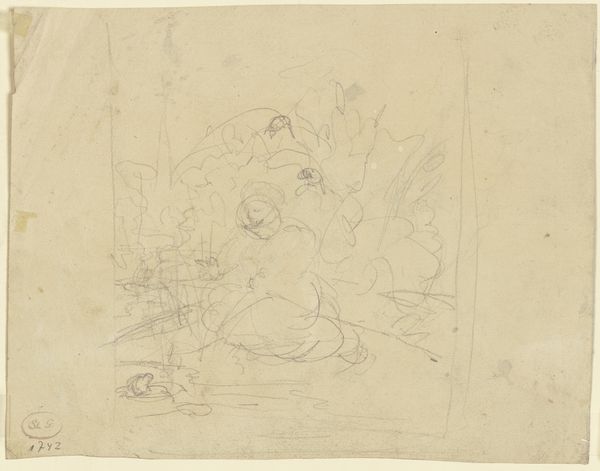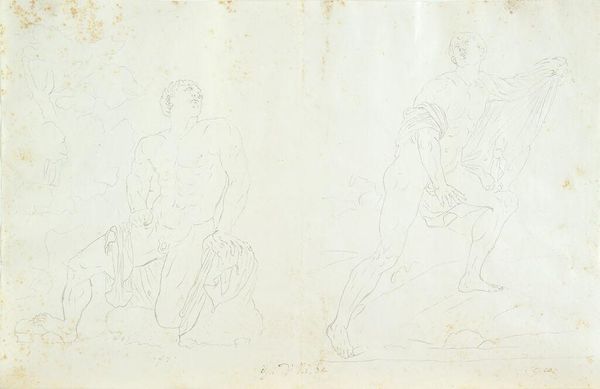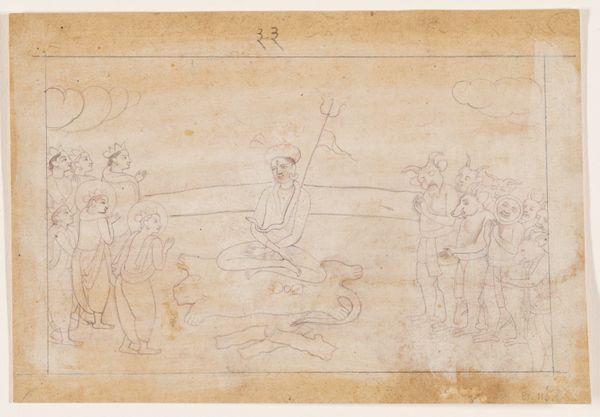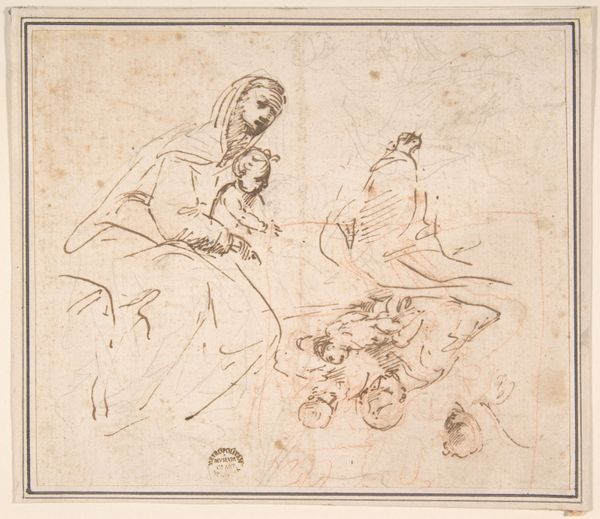
River God (Tigris), sketch (recto) blank (verso) 1500 - 1560
0:00
0:00
drawing, print, paper, pencil
#
drawing
# print
#
figuration
#
paper
#
personal sketchbook
#
pencil
#
line
#
history-painting
#
academic-art
#
italian-renaissance
Dimensions: sheet: 10 3/8 x 15 13/16 in. (26.3 x 40.1 cm)
Copyright: Public Domain
Curator: Immediately I see a monumental fragility. Look at this nearly faded pencil sketch of "River God (Tigris)" likely dating back to between 1500 and 1560. It resides in the collection of the Metropolitan Museum of Art. What impressions strike you? Editor: There is an intentional ambiguity about it, this barely-there image. It reminds me of a palimpsest, traces of an idea worked and reworked until it achieves the strength to bear meaning. What sort of symbol did a river god hold at the time of its making? Curator: The Tigris, as a symbol, carries layers. It references the physical river, of course, central to Mesopotamian civilization. But river gods in Renaissance art are seldom mere depictions of place. Often they are emblematic of power, fertility, and the bountiful gifts of nature that a ruler controls, claiming ownership over the forces that feed and sustain life. Editor: That sense of control interests me. The composition features two figures, one more commanding, one partially obscured and draped, possibly female. The interplay suggests dominance, a very classic positioning of power that extends into contemporary dynamics. Look how the implied lines direct the eye and fix the power narrative. Curator: Absolutely. But it's important to consider the original context. The Tigris isn't just a river; it’s a signifier of civilization's dawn. Visual tropes are repeated. We also see this type of reclining male deity associated with flowing water, even today. From civic architecture to film. A river can drown, or it can nourish, embodying our conflicted relationship with the natural world. Editor: I find the economy of line remarkable. A minimalist execution. One wonders about the unseen drawings underlying what’s visibly articulated here, or indeed, about the future it prefigures. Curator: Yes, it makes you contemplate. Looking closely allows us to consider this work on its own terms and its contribution to a visual language still current. Editor: Indeed. This piece becomes less about ancient gods and more about what persists in representation. A simple sketch—but one with lasting significance.
Comments
No comments
Be the first to comment and join the conversation on the ultimate creative platform.

